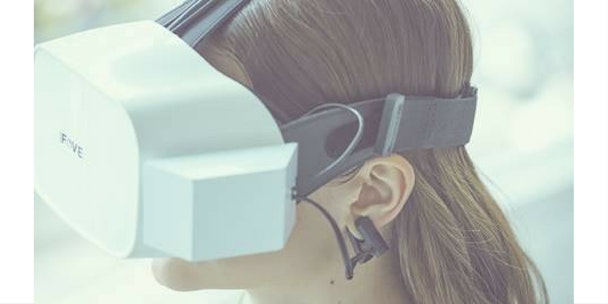VR Insight launches virtual reality prototype that determines users’ emotions
Seven companies that came together to develop a virtual reality platform in March have announced the launch of a VR prototype called ‘VR on air test’ (VR OAT) as the platform’s first service.

‘VR on air test’ (VR OAT) will be the first service on VR Insight platform
VR OAT, which will be carried on VR Insight platform that was developed by AOI Pro. Inc., Altitude Inc., BlueMeme Inc., Fove, Inc., NeuroSky Japan Inc., Up-frontier, Inc., and Brycen Co.,Ltd, aims to scientifically understand how the human mind works while people watch television commercials by monitoring and interpreting their vital reactions, responses, and behavior.
Takayuki Yoshizawa, creative director and general manager of experience design department in AOI Pro. Inc., told The Drum that the idea of such a service came after they realised users were not worried about wearing sensors to capture other vital data while they were utilising VR equipment.
“We originally had the idea of collecting data independently, building a platform and monetising it,” said Yoshizawa.
“If we could then use that data to understand their emotions, we could create a data set that could be used for business purposes as well. Although there are already research tools that utilize brain wave data and eye tracking without VR, an EEG requires a controlled environment to avoid disruption (e.g., users getting distracted by the TV or furnishings around them).
“In the case of eye tracking, the distance between the user and the screen prevents precise measurement of exactly what object the user is viewing. In contrast, with VR, we can easily create a controlled environment (eliminating external distractions) to allow careful measurement of brain waves and other things.
“Eye tracking, when using a technology such as FOVE 0, can measure line of sight with an accuracy of 1 °, which allows us to precisely determine what the user is watching rather than a general location.
“As a result, we thought we could collect and analyze each individual’s data, allowing us to visualise people’s emotions and create a data set that correlates movements to emotions.”
Yoshizawa explained that at this stage, they are keen to target the service at people who are involve in education, training, medicine, and entertainment.
He also added the companies are also looking at creating tools that are related to research product concepts, product design, shopper marketing, and industrial production, as healthcare and training.
“VR Insight collects, analyzes and interprets a variety of biophysical data (line of sight, brain waves, heart rate, etc.) from users in order to determine their emotional state,” said the Japanese.
“By combining a picture of a user’s emotional state (derived from “sensor-based data”) with data from traditional digital marketing tools (such as browsing history and cookies), the platform can be used to create and build businesses that match human emotions.
“In the future, we will expand and diversify the sources and volume of data that we handle in order to grow and enhance our service offerings.
"As our first offering, we have launched the beta version of “On Air Test” that can be used to research the impact of advertising commercials.”
While there are many VR tools already available in the market, VR OAT is the first-ever ‘Emotional Data Platform’ that combines VR and biophysical data such as brain waves and heart rate in a platform to determine users’ emotions and create a data set for business purposes.
“In the advertising industry, people have long sought to develop “insight” as the key to understanding how commercials influence emotions, affect recall and purchase behavior,” said Yoshizawa.
“By utilizing VR and understanding biophysical response, we can start to unravel these connections and apply the knowledge to a wide range of fields.
“ ‘VR On Air Test’ is an example of how this can be applied – and we will continue to develop new solutions in a wide range of applications based on the VR Insight platform.”

